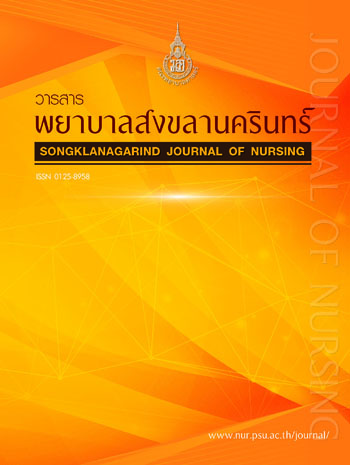Factors Related to Alcohol Drinking Behavior of Adolescents
Main Article Content
Abstract
The present study aimed at investigating 1) alcohol drinking behaviors of adolescents and 2) factors related to alcohol drinking behaviors of adolescents. The PRECEDE Model was used as the conceptual framework of the study. The study sample consisted of 110 secondary school students in Kamphaengsaen District, Nakhon Pathom Province, who were recruited by means of stratified random sampling. Data were collected using questionnaires, which elicited data regarding demographic characteristics, attitudes toward alcohol drinking, perceived impacts of alcohol drinking, access to sources of alcohol purchase, family relationships, and social support. The Alcohol Use Disorders Identification (AUDIT) test was also employed. Pearson’s product moment correlation coefficient was employed to analyze the relationships among the study variables.
The study findings revealed that 93.7% of the subjects had alcohol drinking behaviors at a low risk level, while 2.7% were hazardous alcohol drinkers, 1.8% were harmful alcohol drinkers, and 1.8% were dependent alcohol drinkers. In addition, the factors that were statistically significantly related to alcohol drinking behaviors of adolescents, included attitudes toward alcohol drinking (r = -0.325, p < 0.01), perceived impacts of alcohol drinking (r = -0.195, p < 0.05), access to sources of alcohol (r = -0.188, p < 0.05), social support from family (r = -0.250, p < 0.01), social support from friends (r = -0.189, p < 0.05), and social support from school (r = -0.196, p < 0.05). However, it was found that there was no statistically significant relationship between family relationship and alcohol drinking behaviors of adolescents.
Based on the study findings, it is recommended that nurses should coordinate with schools and related agencies to develop a program to prevent alcohol drinking as well as a program to rehabilitate alcohol drinkers with different levels of risks, using strategies to generate correct attitudes, perceive impacts of alcohol drinking and social support from family, friends, and measure in schools to sustainably reduce alcohol drinking and promote alcohol drinking cessation.


